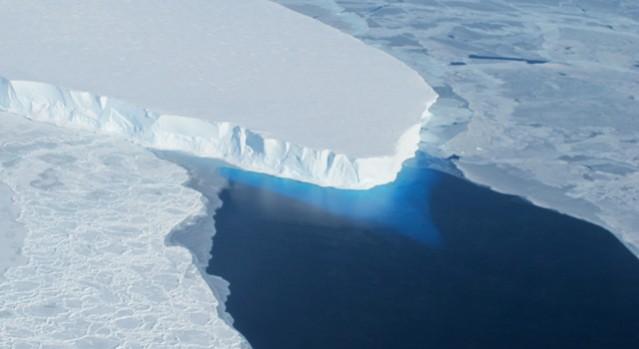It was only a fortnight ago that there was much-needed noise over IPCC Climate Report 2022. The report, among other ominous things, predicted an unprecedented catastrophe due to climate change and how planet Earth is being hit faster and harder than ever imagined. The manifestation of the very same changing climate has begun to appear everywhere. So much so that sometimes even natural variability and other natural causes give rise to doubts of global warming.

A record low in 43 years
Antarctica is surrounded by sea ice, which grows in the winter and shrinks in the summer. Total surface area of ice, differs each year. However, Antarctic sea ice has shrunk to below 2 million square kilometres this year. Simply put, ever since the satellite records began 43 years ago, this is the lowest minimum level that ice has shrunk to.
As per the US National Snow and Ice Data Center (NSIDC) report early this month, the minimum extent of 1.92 million square kilometres occurred on 25 February and it was 190,000 square kilometres less than the previous lowest level. The now second-lowest level was reached in 2017.
Climate scientist Zack Labe, warned on his social media page, "Both Arctic and Antarctic sea ice extents have remained below average all year. Their combined departure is over 2 million square kilometres."
Why the record lows?
The science community collectively has pinned down the record lows partly to strong winds pushing ice out of the Ross Sea, a bay off the coast of Antarctica, to areas where it's warmer, like the farther north. There, the ice melted after it broke up. Walt Meier, a senior research scientist at NSIDC, who is based at the University of Colorado Boulder said that much, if not all, of the event can be ascribed to natural variability, reported Nature.
It is but natural to study the current record low in terms of the previous record low which happened in 2017. Ryan Fogt, a climatologist at Ohio University in Athens, says that both the times, the record low happened in the same way. From 2017, the sea-ice extent stayed well below average for a few years and then returned to near-average conditions again in 2020. There is no reason to believe that it will be any different with the current low. Although, the exact cause of the record low ice and whether future years will similarly reverse the trend for sure is unclear.
Points to be noted
However, it must be noted that the new record low comes just two years after the largest January Antarctic Sea ice extent on record. Given the variations, researchers will now begin to study with interest the record minimums. However, in the long term climate change will result in declining Antarctic sea ice.
Over to the Arctic Sea

While the sea ice has declined rapidly in Arctic since satellite monitoring and record keeping began in 1979, Antarctic Sea on the other hand has seen a lot of yearly variability. The decline in Antarctic Sea also contradicted a lot of climate change models that predicted its rapid decline due to greenhouse gas emissions.
The highest record in minimum sea-ice in Antarctic was reached in 2008. Cut to 2015 and the minimum level dropped dramatically. Given the sudden and so much of variability, the climate scientists are not surprised at the record lows. However, in Antarctica things are different since the sea ice forms wherever it is cold enough for ice to form. This means that it melts just as easily and being thin, moves freely with the winds.





!['Had denied Housefull franchise as they wanted me to wear a bikini': Tia Bajpai on turning down bold scripts [Exclusive]](https://data1.ibtimes.co.in/en/full/806605/had-denied-housefull-franchise-they-wanted-me-wear-bikini-tia-bajpai-turning-down-bold.png?w=220&h=138)



